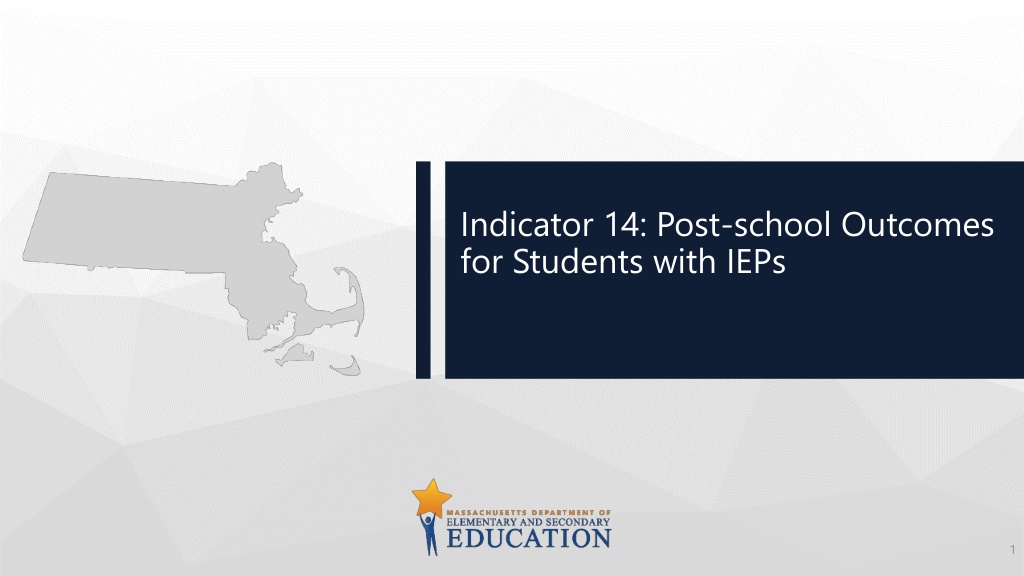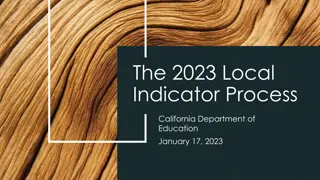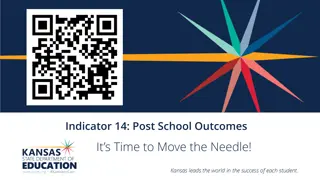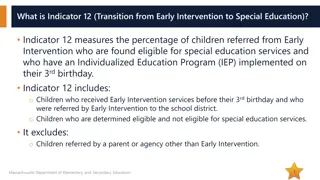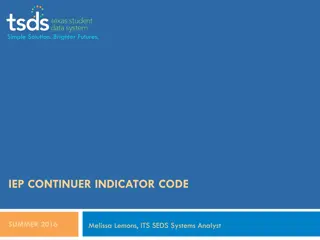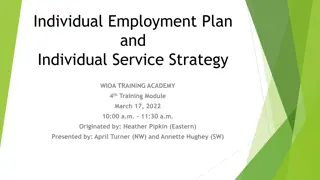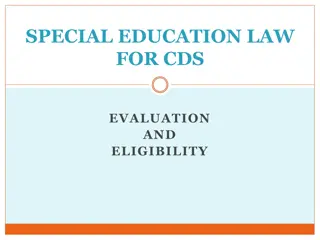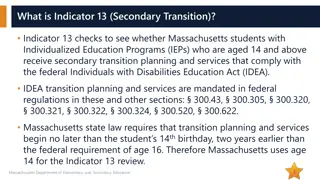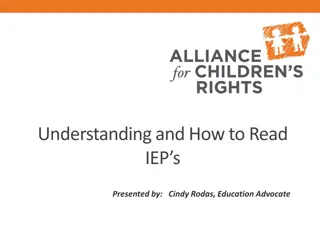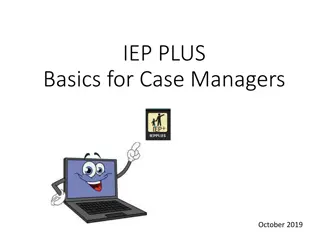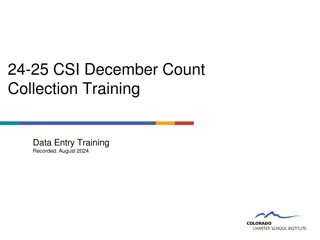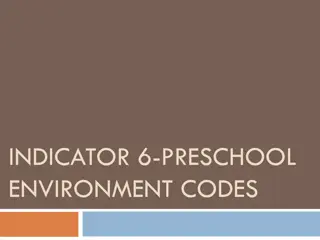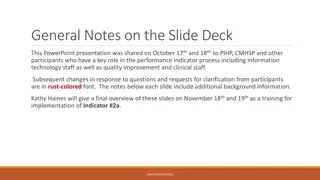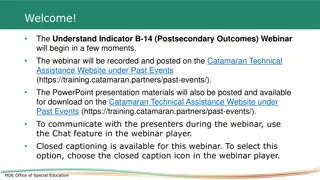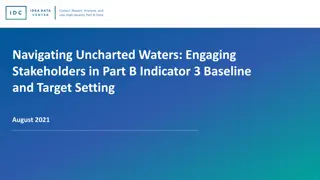Understanding Indicator 14: Post-School Outcomes for Students with IEPs
Indicator 14 is a crucial measure used to assess the post-school outcomes of students with IEPs one year after they leave high school. It focuses on whether these students are enrolled in higher education, competitively employed, or engaged in other postsecondary education or training programs. Massachusetts is enhancing its data collection methods to gain a more comprehensive understanding of how well the education system prepares students with disabilities for adult life.
Download Presentation

Please find below an Image/Link to download the presentation.
The content on the website is provided AS IS for your information and personal use only. It may not be sold, licensed, or shared on other websites without obtaining consent from the author. Download presentation by click this link. If you encounter any issues during the download, it is possible that the publisher has removed the file from their server.
E N D
Presentation Transcript
Indicator 14: Post-school Outcomes for Students with IEPs 1
What is Indicator 14? Indicator 14 is one of the 17 Indicators that the United States Office of Special Education Programs (OSEP) uses to see whether school districts are following special education law and whether special education is improving outcomes for students with disabilities. Indicator 14 reports whether our students with Individualized Education Programs (IEPs) are in school or have a job one year after they leave high school by graduating, aging out at age 22, or dropping out. 2 Massachusetts Department of Elementary and Secondary Education
What are the three Indicator 14 measurements? OSEP requires a report of the percent of youth who are no longer in secondary school, had IEPs in effect at the time they left school, and within one year of exiting high school were: A. Enrolled in higher education B. Enrolled in higher education or competitively employed C. Enrolled in higher education or in some other postsecondary education or training program; or competitively employed or in some other employment 3 Massachusetts Department of Elementary and Secondary Education
Why is Indicator 14 important? Indicator 14 tells us about the lives of our students with IEPs one year after they have left high school. It is one way to help us understand whether students education prepared them for adult life. 4 Massachusetts Department of Elementary and Secondary Education
Starting in 2023, which districts will collect Indicator 14 data? 2023 and Beyond: Massachusetts is moving to statewide data collection. This will give us a more comprehensive picture of the lives of our students with IEPs one year after they have left high school. This change to all-state data collection will improve Massachusetts ability to disaggregate and analyze data in a statistically significant way and to better compare Indicator 14 data with graduation data (Indicator 1) and dropout data (Indicator 2). 5 Massachusetts Department of Elementary and Secondary Education
How does Massachusetts collect Indicator 14 data? Data Collection: During the summer and early fall, districts survey their former students with IEPs using the Massachusetts After High School Survey. Multiple Languages: The survey is online. It can be completed by the former student or by school staff on behalf of the former student. The survey is available in multiple languages, including English, Spanish, Portuguese, Chinese, Haitian Creole, and Vietnamese. 6 Massachusetts Department of Elementary and Secondary Education
What factors affect Indicator 14 results? The COVID-19 pandemic has influenced whether our former students with IEPs go to school and/or work after high school. If groups are under- or over-represented in the survey (for example, Latinx students, students with intellectual disabilities, or students who dropped out), the data may show that our former students with IEPs are more or less engaged in school or work than they really are. Both the interviewers and the former students may be biased. Based on the response group size for Measures A, B, and C, there is a margin of error of approximately plus or minus three percent. 7 Massachusetts Department of Elementary and Secondary Education
Additional information To learn more: oMassachusetts SPP/APR oMassachusetts Indicator 14 oStatewide Indicator Data oU.S. Office of Special Education Programs (OSEP) SPP/APR Letters 8 Massachusetts Department of Elementary and Secondary Education
